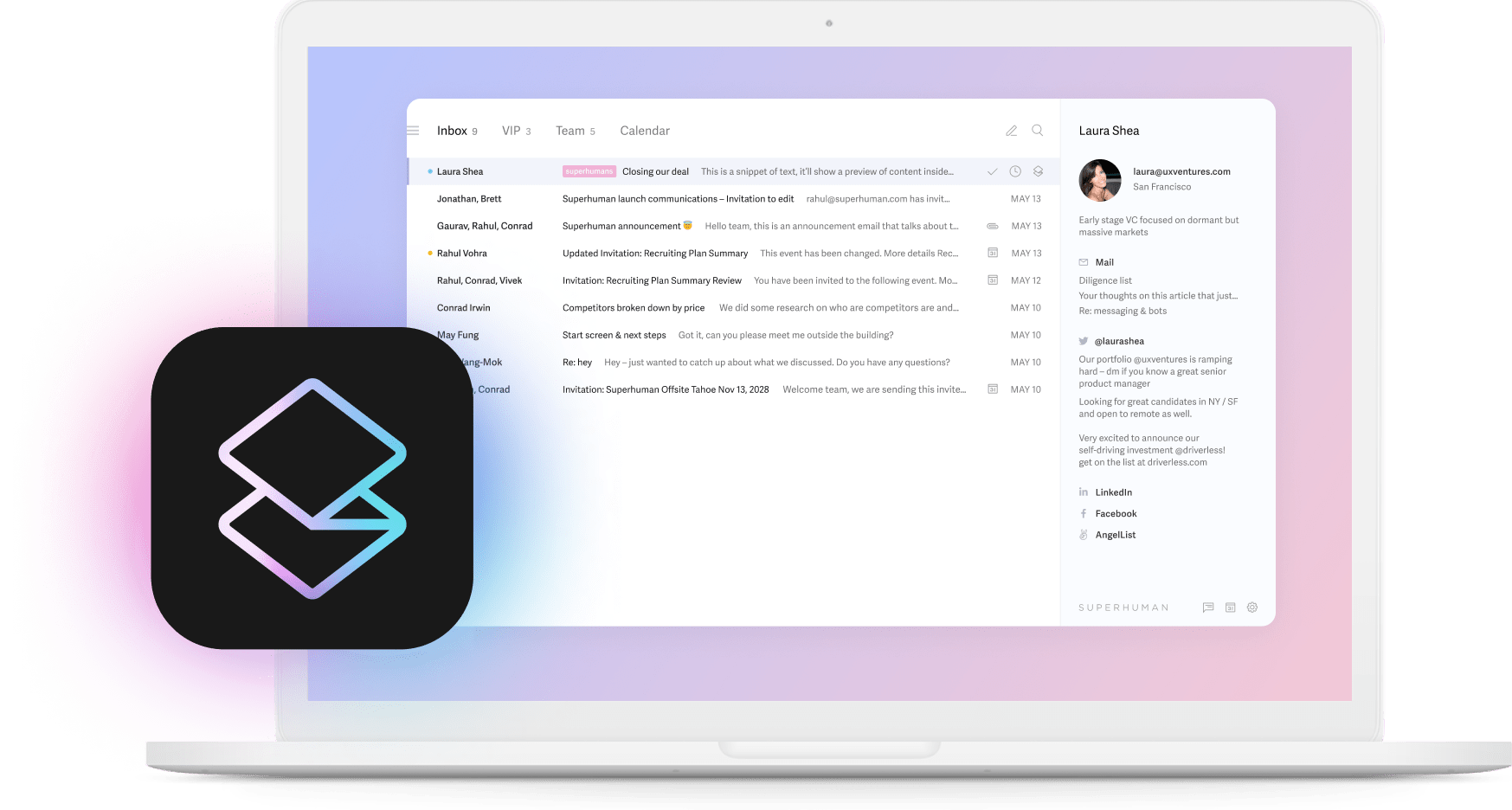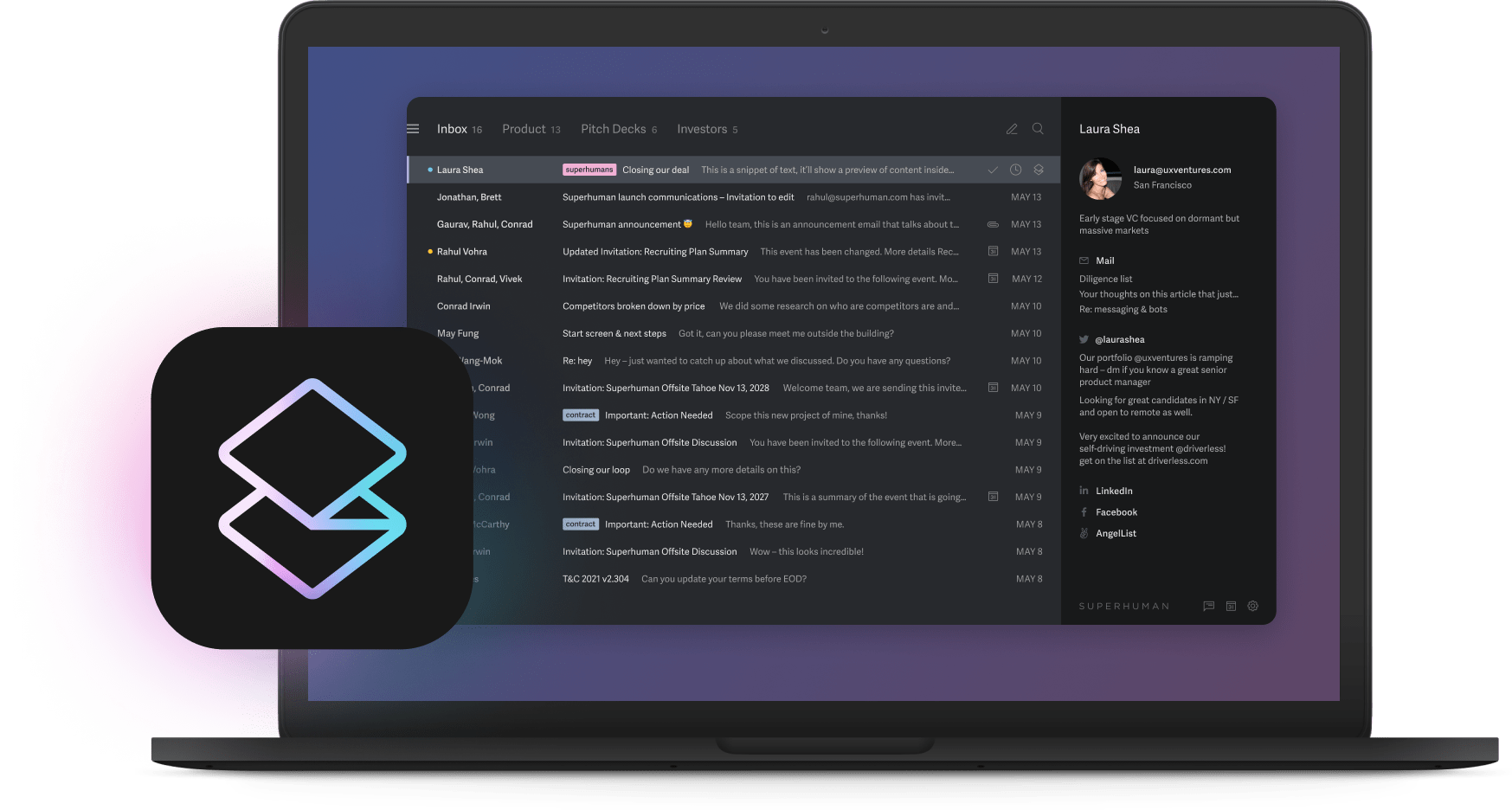
Ever wonder why some emails land in spam while others get instant replies? Your email address is working against you. When you send from sarah.johnson.innovate.design@gmail.com instead of sarah@innovatedesign.com, recipients see red flags.
Most first impressions in business happen via email, and spam filters today scrutinize generic addresses harder than ever. Custom domain email is how you prove you're legitimate before anyone reads word one.
Why use a custom domain for email
Using a custom email domain boosts professionalism, brand recognition, and trust. It offers more control, flexibility, better deliverability, and lets you change providers without altering your address.
Professional credibility that lands in the inbox
Compare these two addresses:
Professional: sarah@innovatedesign.com Generic: sarah.johnson.innovate.design@gmail.comThe difference is immediate. Recipients are more likely to trust businesses with custom domain emails. Your brand reinforces itself with every message sent. Free email services raise questions about authenticity and permanence.
Custom domains also dodge spam filters more effectively. When you share sender reputation with millions of Gmail users, one bad actor can tank your deliverability. With your own domain, you control your reputation.
Security you can actually control
Custom domains let you implement authentication protocols that free email services can't match:
- SPF records: Specify which servers send email on your behalf
- DKIM authentication: Cryptographically sign emails to prevent tampering
- DMARC policies: Tell receiving servers how to handle unauthenticated messages
- Enterprise encryption: Meet compliance standards free services don't support
These protocols protect you and your recipients from phishing attacks. They also signal to email providers that you're a legitimate sender.
Team structure that scales
As your business grows, custom domains provide flexibility free services can't:
Department aliases:
- sales@yourcompany.com
- support@yourcompany.com
- marketing@yourcompany.com
- hello@yourcompany.com
This structure enables department-based routing, professional handoffs when team members change, and centralized administration. You can create structured email systems without juggling personal addresses.
Better deliverability
Custom domains deliver better inbox placement because they separate you from the crowded reputational pool of free email services. When you use a shared domain like Gmail or Yahoo, your deliverability depends on the behavior of millions of other users including spammers.
With a custom domain, you own your sender reputation. You can authenticate your emails with SPF, DKIM, and DMARC, signal trust to mail servers, and consistently land in inboxes instead of spam folders.
How to set up a custom domain email
Setting up a custom domain email lets you send messages from a branded address that reflects your business, like you@yourcompany.com. Here’s a quick guide to help you connect your domain, configure DNS records, and start sending professional emails.
Step 1: Pick your domain name
Your domain name becomes the foundation for all business communications.
Choose a reputable registrar that offers:
- Competitive pricing and renewal rates
- Free WHOIS privacy protection
- Easy DNS management tools
- Reliable customer support
Popular options:
- Namecheap: Competitive pricing, excellent customer service
- GoDaddy: Comprehensive business tools
- Google Domains: Clean interface, seamless Google Workspace integration
- Cloudflare: Advanced DNS features with security focus
Purchase WHOIS privacy protection to keep your personal information private in public domain records.
Step 2: Choose your email hosting provider
Your email provider determines your long-term experience and capabilities.
A provider comparison:
Consider these factors:
- AI-readiness: Integration with modern AI tools
- Authentication support: Full SPF, DKIM, and DMARC capabilities
- Scalability: Future team growth and feature needs
- Integration options: Compatibility with productivity and CRM tools
Step 3: Configure DNS records
This step connects your domain with your email provider.
Understanding TXT records:
TXT records store text-based information in your domain's DNS settings. You'll use them for:
- Domain verification (proving you own the domain)
- SPF authentication (specifying authorized sending servers)
- DMARC policies (setting email authentication rules)
Understanding MX records:
Mail Exchange (MX) records direct email traffic to your email servers. They include:
- Priority values (lower numbers = higher priority)
- Mail server addresses (where emails should be delivered)
- TTL settings (how long DNS systems should cache the record)
Common DNS setup:
For Google Workspace:
MX Records: 1 ASPMX.L.GOOGLE.COM. 5 ALT1.ASPMX.L.GOOGLE.COM. 5 ALT2.ASPMX.L.GOOGLE.COM. 10 ALT3.ASPMX.L.GOOGLE.COM. 10 ALT4.ASPMX.L.GOOGLE.COM.For Microsoft 365:
MX Record: 0 yourcompany-com.mail.protection.outlook.com.DNS propagation can take up to 48 hours globally. Use tools like whatsmydns.net to monitor propagation progress.
Step 4: Create your email accounts
Strategic account creation ensures professional communication from day one.
Essential business addresses:
- info@yourcompany.com: General inquiries
- hello@yourcompany.com: Friendly contact option
- support@yourcompany.com: Customer service
- sales@yourcompany.com: Sales inquiries
- team@yourcompany.com: Internal collaboration
Personal email best practices:
- Use firstname@yourcompany.com for individual addresses
- Create firstname.lastname@yourcompany.com for common names
- Set up role-specific addresses like ceo@yourcompany.com
- Configure automatic forwarding to team members who handle multiple roles
Step 5: Set up email authentication
Authentication protocols prevent spoofing and improve deliverability.
Configure SPF:
SPF records specify which servers can send email on your behalf:
v=spf1 include:_spf.google.com ~allThis tells receiving servers to check if the sending server is authorized. The "~all" means "soft fail" for unauthorized servers.
Set up DKIM:
DKIM adds a cryptographic signature to your emails:
- Generate a DKIM key pair through your email provider
- Add the public key to your DNS as a TXT record
- Configure your email server to sign outgoing messages
- Test with mail-tester.com
Implement DMARC:
DMARC policies tell receiving servers how to handle failed authentication:
v=DMARC1; p=quarantine; rua=mailto:dmarc@yourcompany.comStart with "p=none" to monitor, then move to "p=quarantine" or "p=reject" as you verify authentication works correctly.
Step 6: Test your setup
Before launching, verify everything works:
Send test emails:
- Send from your new custom domain address
- Check delivery to Gmail, Outlook, and other major providers
- Verify emails don't land in spam folders
- Confirm authentication passes (check email headers)
Run authentication tests:
- Use mail-tester.com for comprehensive scoring
- Check MXToolbox for DNS record validation
- Monitor DMARC reports for authentication issues
- Test deliverability across different email providers
Troubleshooting common issues
Common setup problems can include DNS record errors, domain verification failures, or mail not syncing properly. Here’s how to identify and fix these issues so your custom domain email works flawlessly.
Emails not receiving
Symptoms: You can send but not receive emails
Solutions:
- Verify MX records are correctly configured
- Check DNS propagation using global testing tools
- Ensure TTL values are appropriate (3600 seconds recommended)
- Contact your DNS provider if propagation exceeds 48 hours
Email authentication failures
Symptoms: Emails going to spam, delivery failures, authentication warnings
Diagnosis steps:
- Test your domain with mail-tester.com
- Check SPF record syntax and lookup count
- Verify DKIM records are published and aligned
- Monitor DMARC reports for authentication failures
SPF fixes:
- Consolidate multiple includes to stay under 10 DNS lookups
- Use IP addresses instead of includes where possible
- End SPF records with "-all" for strict enforcement
DKIM fixes:
- Ensure DKIM selector records are published correctly
- Verify private key matches published public key
- Check that sending service properly signs emails
DMARC fixes:
- Start with "p=none" to monitor before enforcing
- Ensure either SPF or DKIM aligns with the From domain
- Set up aggregate reports to monitor authentication performance
Custom domain emails going to spam
Primary causes:
- Missing or misconfigured authentication records
- Poor sender reputation from previous domain use
- Shared IP reputation issues with email provider
- Content triggers in email subject lines or body
Solutions:
- Implement all authentication protocols correctly
- Warm up your domain reputation gradually
- Monitor sender reputation through provider tools
- Test email content for spam triggers
Can I use Gmail with my own domain?
Yes, through Google Workspace integration. This provides:
- Professional email addresses using your domain
- Gmail's familiar interface
- Full Google productivity suite integration
- Enterprise-grade security and administration
You can also configure Gmail to send and receive from custom domains via SMTP, though this provides limited features compared to full Google Workspace integration.
Managing high-volume email
Your custom domain proves you're legitimate. Now you need to handle the volume that credibility brings.
When email becomes overwhelming
Modern professionals receive 121 emails daily, spending most of their workweek managing their inbox. With custom domain email establishing your credibility, the pressure to respond quickly intensifies.
You're stuck between two demands: respond fast or your opportunities vanish. But sorting through hundreds of messages buries important conversations under newsletters and notifications.
Split Inbox automatically prioritizes what matters
When regulatory emails and compliance updates flood your inbox, Split Inbox in Superhuman Mail automatically categorizes communications so critical discussions never get buried. It separates high-priority messages from colleagues, executives, and integrated tools like Google Docs from low-priority notifications.
You see what needs immediate attention. Everything else waits.
AI that writes in your voice
Superhuman AI analyzes messages you've sent to specific recipients and matches your tone. It learns over time from your writing, not from corrections. Write "reply yes" and it drafts a full response that sounds like you wrote it.
Teams using Superhuman Mail save 4 hours per person every week through increased email processing speed and respond 12 hours faster on critical business communications.
Team collaboration without forwarding chains
Shared Conversations enable real-time collaboration on important email threads without creating forwarding chains that lose context. Add private internal discussions directly within email threads using Team Comments, facilitating quick decision-making without cluttering the original conversation.
Read Statuses show exactly when and on what device emails were read, empowering teams to follow up with confidence and coordinate responses effectively.
Advanced setup for teams
Advanced setup for teams helps you manage multiple users under one domain with shared controls and security settings. It streamlines collaboration, ensures consistent branding, and gives admins centralized management over accounts and permissions.
User management and permissions
Organizational structure:
- Create department-based email groups
- Implement role-based access controls
- Set up shared mailboxes for common functions
- Configure delegation for executive assistants
Best practices:
- Use consistent naming conventions across all accounts
- Implement two-factor authentication organization-wide
- Set up automated backups for email data
- Create email retention policies for compliance
Alias strategy for growing teams
Departmental structure:
sales@yourcompany.com → Sales team distribution list marketing@yourcompany.com → Marketing team members support@yourcompany.com → Customer service platform billing@yourcompany.com → Accounts receivable teamGet Started with Superhuman Mail
Custom domain email today establishes digital credibility, enables advanced security protocols, and creates the foundation for scalable team communications. Professional perception builds trust. Authentication protocols enhance security. Scalable infrastructure grows with your business. Superior deliverability ensures your messages reach their intended recipients.
But custom domains alone aren't enough anymore. The modern business environment demands speed, intelligence, and seamless team collaboration in email management. Superhuman Mail combines custom domain professionalism with AI-native productivity to transform communication infrastructure from necessary overhead into strategic advantage.





